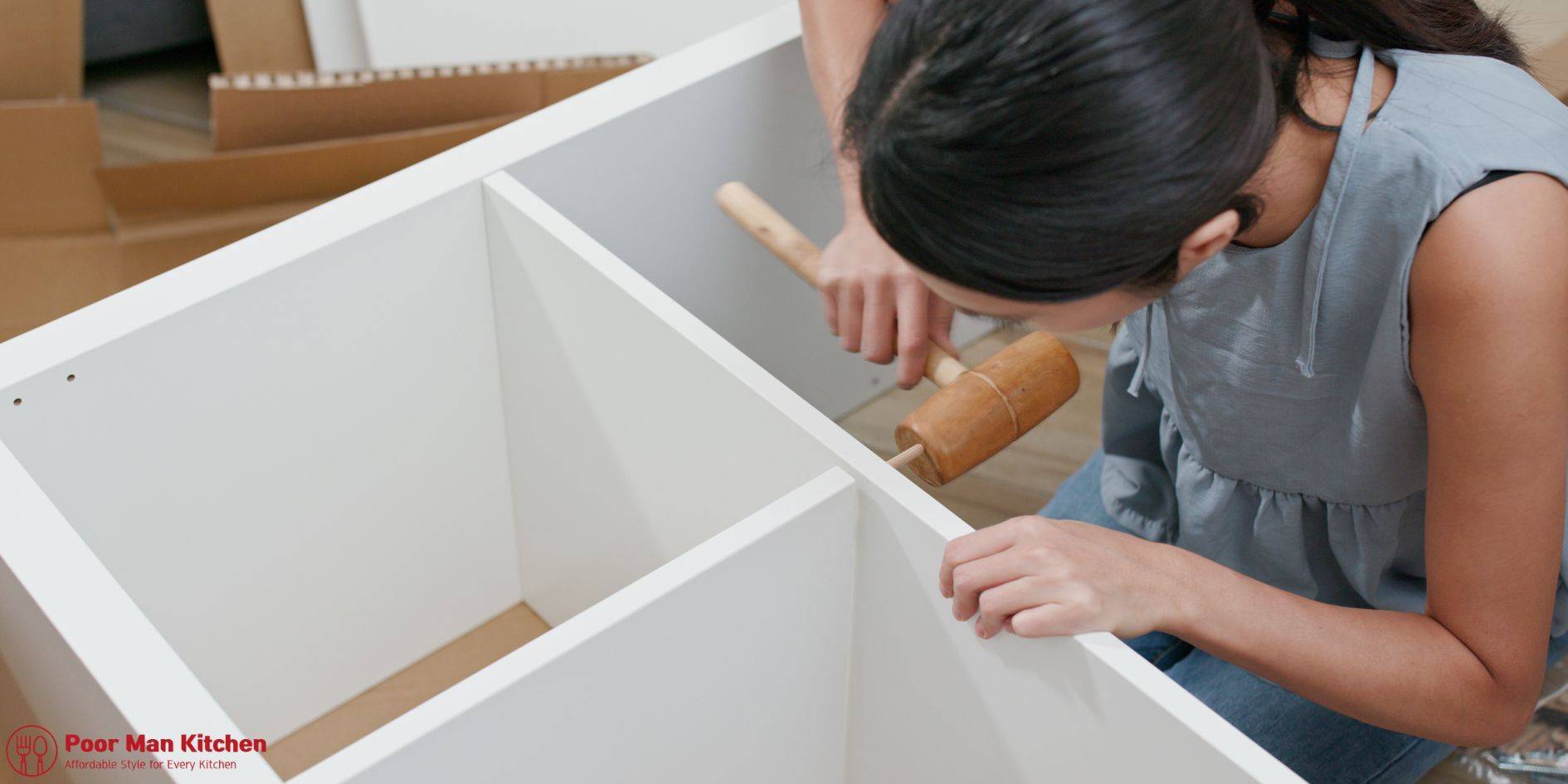Introduction
Kitchen sink base cabinets, the cooking area sink base cabinet is like the engine space of your cooking area. It holds pipes, cleans your dishes, and typically gets the worst of spills, leaks, and gunk. While aesthetics matter, longevity and wetness resistance are what truly define the very best material options for this essential component of your kitchen area.
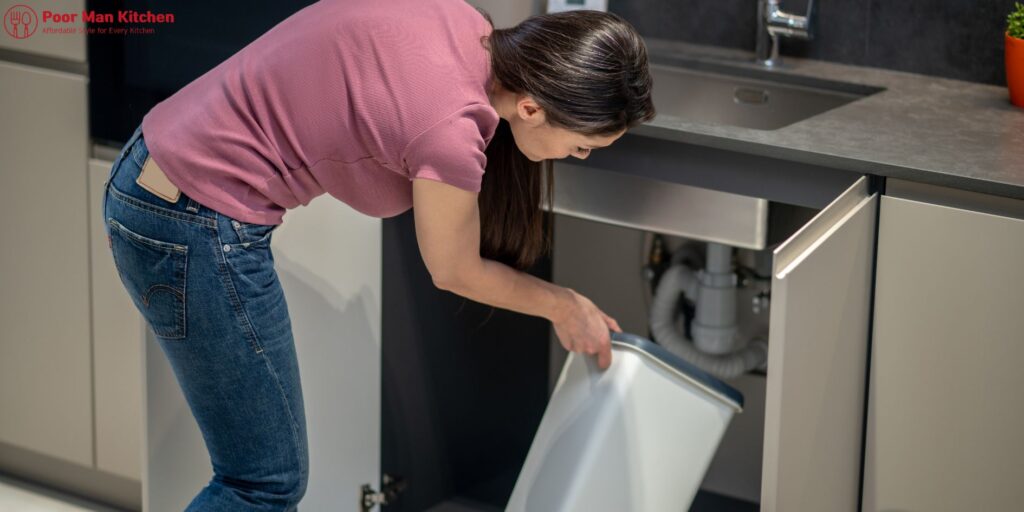
In 2025, the marketplace will offer numerous alternatives. However, not all products are developed equally. This guide will help you explore the top materials for a long-lasting cooking area sink base cabinet, breaking down their strengths, weaknesses, patterns, and care requirements.
Why Material Selection Matters for Sink Base Cabinets
Sink base cabinets are more susceptible to damage than upper cabinets or wall-mounted storage systems. They are directly linked to pipes, dishwashing machines, waste disposal units, and more. Even the most minor leakages or standing water can lead to:
Swelling or delamination
Mould and mildew growth
Nasty odors
Structural weakening
Insect infestations
That’s why choosing the ideal material from the start is one of the best long-term financial investments you can make in your kitchen.
When Choosing Materials, Secret Factors to Consider
1. Water Resistance
This is concern number one.
2. Resilience and Lifespan
Some materials may last 5 years, while others could last 25 years with proper treatment; the more resilient the material, the better its long-term value.
3. Maintenance
A gorgeous cabinet that requires consistent maintenance is no fun at all—relief from cleaning, touch-ups, and repairs should be a factor in your choice.
4. Expense vs. Performance
Inexpensive products may work in the short term; however, cost doesn’t always equate to better quality. You want the very best efficiency per dollar.
5. Eco-Friendliness
If sustainability matters to you, choose materials with FSC accreditation, low VOC adhesives, and eco-friendly sources.
Top Materials for Kitchen Sink Base Cabinets in 2025
1. Plywood– The Time-Tested Favourite
Plywood is a gold standard for cabinetry for a factor.
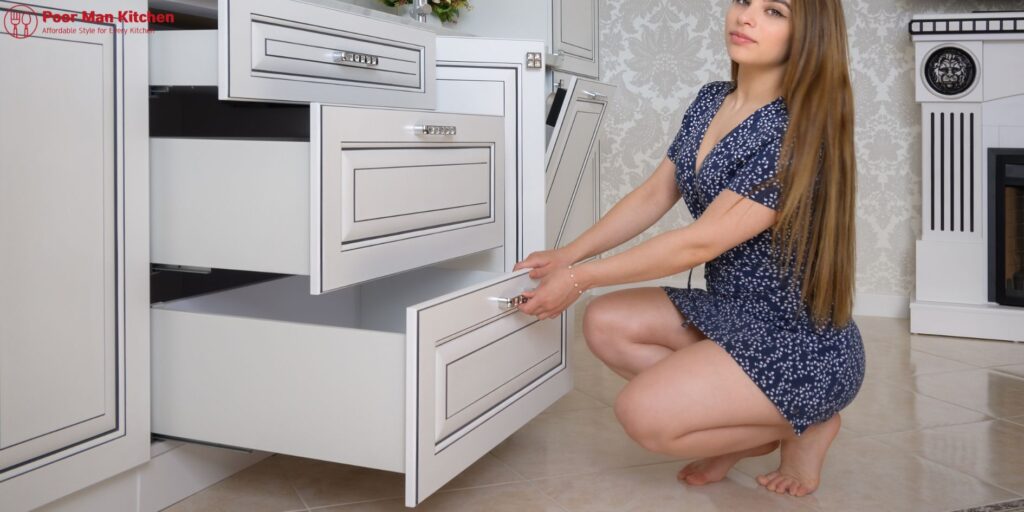
What’s So Great About It?
This layered structure provides it with extraordinary strength, reduced warping, and improved moisture resistance compared to particleboard or MDF.
Why It’s Still a 2025 Favourite:
Available in water-resistant grades (e.g., BWP or Marine).
Easier to repair compared to PVC or MDF.
Outstanding load-bearing capability.
Natural wood aesthetic appeals.
Regular plywood will not cut it.
2. Strong Wood– Beauty with Caveats.
Solid wood cabinets offer an ageless charm and value to any kitchen. The grain, feel, and smell are difficult to duplicate.
Pros:.
High-end appeal.
Can be sanded and refinished.
Long-lasting and strong.
Cons:.
Prone to deforming with humidity.
Needs sealing and upkeep.
Pricey.
Best Wood Types:.
Teak– Insect-repelling and naturally moisture-resistant.
Maple– Hard, consistent texture.
Oak– Strong with deep grain patterns.
Last Thought: Use strong wood only if you’re okay with routine upkeep. Otherwise, wetness damage may ruin your financial investment.
3. High-Density Fiberboard (HDF)– Stronger than MDF.
While it’s often mistaken for MDF, HDF is heavier, more durable, and performs better in areas where humidity or moisture is a concern.
Advantages:.
Smooth surface area for painting.
Stronger and much heavier than MDF.
Good resistance to effect.
Limitations:.
Not waterproof unless sealed.
It can be expensive.
Does not hold screws as well as plywood.
Finest Use: HDF is ideal for painted cabinet doors, but it should be paired with a water-resistant surface or laminate under the sink.
4. Medium-Density Fiberboard (MDF)– Budget Meets Risk.
MDF is a typical cabinet product; however, it does not perform well in wet environments. Still, many property owners appreciate its cost and smooth finish.
The Good:.
Consistent texture.
Easy to paint.
Budget-friendly.
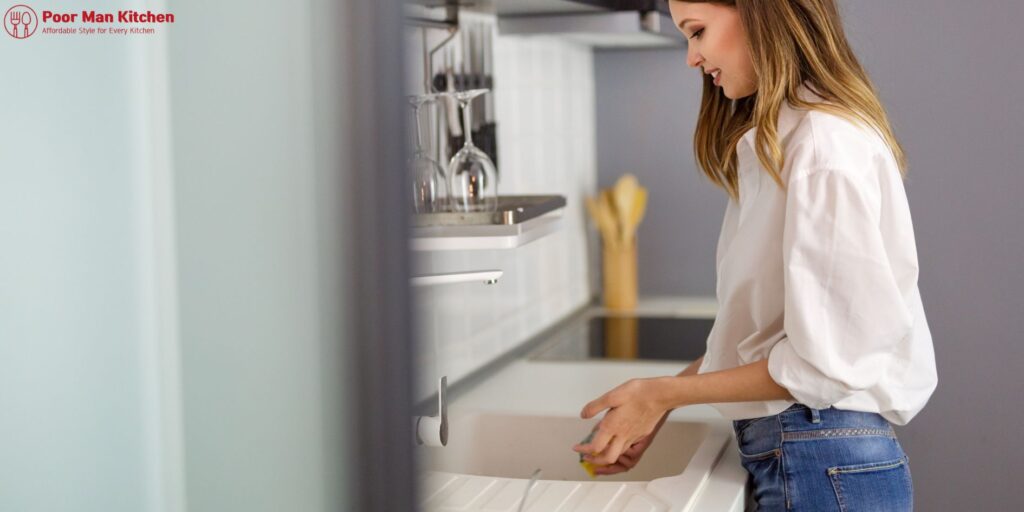
The Bad:.
Highly absorbent if unsealed.
Swells quickly.
Not repair-friendly.
Bottom Line: Choose MDF only if the area is sealed, laminated, and is far from direct water exposure.
5. Marine Grade Plywood– The Ultimate Protection.
Developed to make it through on boats and docks, marine plywood is your strongest bet against water damage.
Top Features:.
No gaps between veneers (avoids water penetration).
Utilises water-resistant adhesive.
Dealt with for fungal and termite resistance.
Usage Cases:.
Luxury kitchen areas.
Wet areas (under sink, around dishwashers).
View Out: It’s expensive, but its resilience and security against leakages are unrivalled.
6. PVC Cabinets– Waterproof and Modern.
Polyvinyl Chloride (PVC) is gaining serious appeal in modular kitchens. In 2025, we’re seeing sleeker, more powerful, and more personalised PVC kitchen cabinetry than ever.
What You’ll Love:.
Completely waterproof.
Termite and rust proof.
Lightweight and straightforward to install.
Comes in shiny, matte, and textured finishes.
Drawbacks:.
Can warp with heat.
Less intense than wood or plywood.
Can feel “plasticky” in high-end styles.
Ideal for Budget-conscious property owners who need zero-maintenance, water-resistant options.
7. Stainless Steel– Sleek, Strong, Industrial.
Used primarily in business kitchen areas, stainless-steel cabinets are making their way into modern-day minimalist homes.
Why It’s Awesome:.
100% waterproof.
Withstands heat, rust, and stains.
Durable for decades.
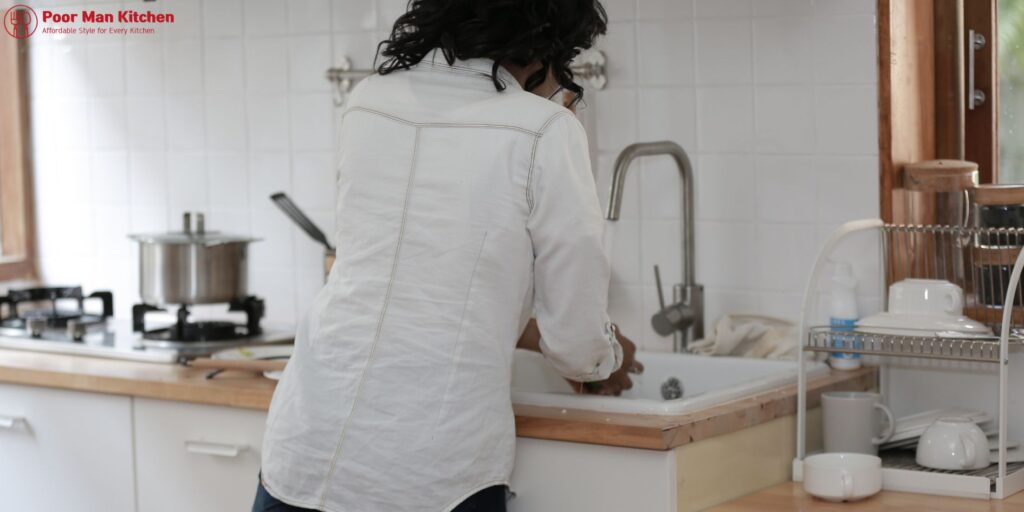
Drawbacks:.
Industrial appearance isn’t for everybody.
Scratches and fingerprints show up.
Expensive.
Emerging Trends in Cabinet Materials (2025 ).
Eco-Friendly Options.
More consumers are picking green materials like:.
Bamboo Plywood— Fast-growing, eco-friendly, and strong.
Recycled Wood Composites— Made from post-consumer wood waste.
Low-VOC Boards— For much healthier indoor air quality.
Moisture-Resistant Coatings.
Anticipate seeing nanotech-based waterproofing sprays, moisture-barrier sheets, and even UV-cured acrylic surfaces that extend the life of wood-based products.
Hybrid Builds.
Some manufacturers are integrating marine plywood cores with PVC exteriors for the ideal blend of strength and waterproofing. Think about it as the cabinet version of Iron Man’s match.
Care Tips to Extend the Life of Your Sink Base Cabinet.
1. Seal Everything.
Use silicon sealant around edges, screw holes, and pipe cut-outs to prevent water entry.
2. Include a Drip Tray or Mat.
A basic under-sink water-resistant mat can capture small leaks before they cause damage.
3. Usage Soft-Close Hinges.
Prevent slamming your cabinet doors. It reduces vibrations and damage gradually.
4. Routinely Check Plumbing.
Make it a habit to inspect your pipelines every few months. A small drip can quickly become a mould factory.
5. Clean with Non-Abrasive Products.
Avoid the extreme cleaners. Use moderate detergent and soft fabrics to keep surfaces scratch-free and clean.
Conclusion.
The very best product for your cooking area sink base cabinet in 2025 depends on your budget, style preference, and desire to preserve it. For optimum resilience and moisture resistance, marine plywood, PVC, and stainless steel are the leading materials.
Choose solid wood, but be prepared to preserve it. Go with HDF or MDF; however, protect them well.
Your cooking area deserves a strong structure. Make it last.
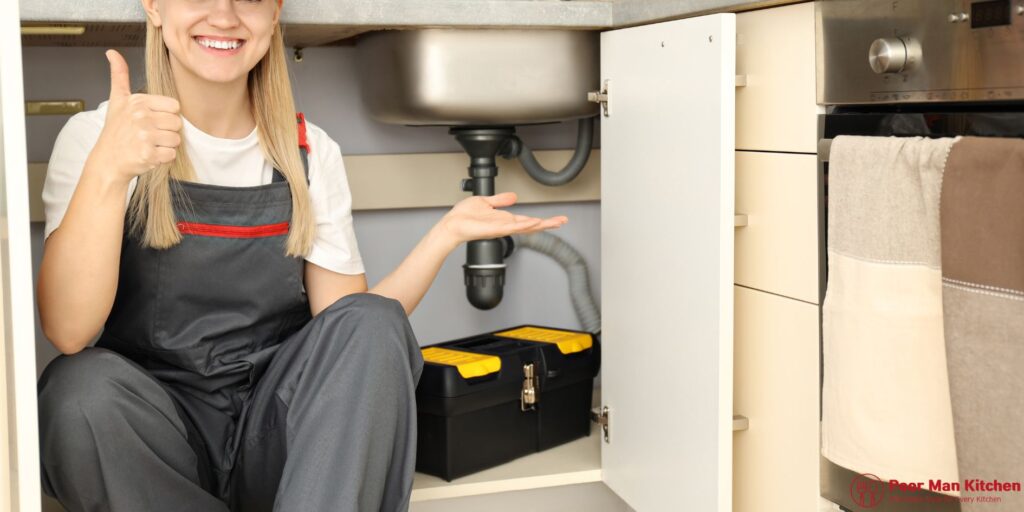
FAQs.
1. What is the most water-resistant product for kitchen sink base cabinets?
PVC is completely water-immune, while marine plywood is designed to resist prolonged water exposure.
2. Can MDF be made water resistant?
To a degree. While MDF is naturally permeable, sealing it with waterproof guides, laminates, or moisture-resistant paint can provide some protection, but it will never be genuinely water-resistant.
3. How typically should I examine my sink base cabinet for damage?
At least every 3 months. Early detection of moisture, mould, or leaks can save you significant repair expenses.
4. Are PVC cabinets durable and safe?
Yes. PVC is non-toxic, termite-proof, and rust-resistant. Modern PVC cabinets are also far more elegant and durable than their earlier versions.
5. Is plywood still an excellent choice in 2025?
Absolutely. Especially marine-grade or BWP plywood, which has outstanding resistance to warping and damage in high-moisture environments.
The cooking area sink base cabinet is like the engine room of your kitchen. While visual appeals matter, durability and moisture resistance are what genuinely specify the best material options for this essential element of your kitchen.
This guide will help you explore the leading materials for a long-lasting kitchen sink base cabinet– breaking down their strengths, weaknesses, trends, and care requirements.
Sink base cabinets are more susceptible to damage than upper cabinets or wall-mounted storage units. Modern PVC cabinets are likewise much stronger and trendier than their earlier versions.
<script type="application/ld+json">
{
"@context": "https://schema.org",
"@type": "BlogPosting",
"mainEntityOfPage": {
"@type": "WebPage",
"@id": "https://poormankitchen.com/kitchen-sink-base-cabinet/"
},
"headline": "Best 7 Long-Lasting Kitchen Sink Base Cabinets in 2025",
"description": "Kitchen sink base cabinets, the cooking area sink base cabinet is like the engine space of your cooking area. It holds pipes, cleans your dishes, and typically gets the worst of spills, leaks, and gunk. While aesthetics matter, longevity and wetness resistance are what truly define the very best material options for this essential component of your kitchen area.",
"image": "https://poormankitchen.com/wp-content/uploads/2025/07/kitchen-sink-base-cabinet-1.jpg",
"author": {
"@type": "Person",
"name": "poormankitchen",
"url": "https://poormankitchen.com/kitchen-sink-base-cabinet/"
},
"publisher": {
"@type": "Organization",
"name": "Humayon",
"logo": {
"@type": "ImageObject",
"url": "https://poormankitchen.com/wp-content/uploads/2025/07/cropped-Nest-1.png"
}
},
"datePublished": "2025-08-03",
"dateModified": "2025-08-03"
}
</script>
